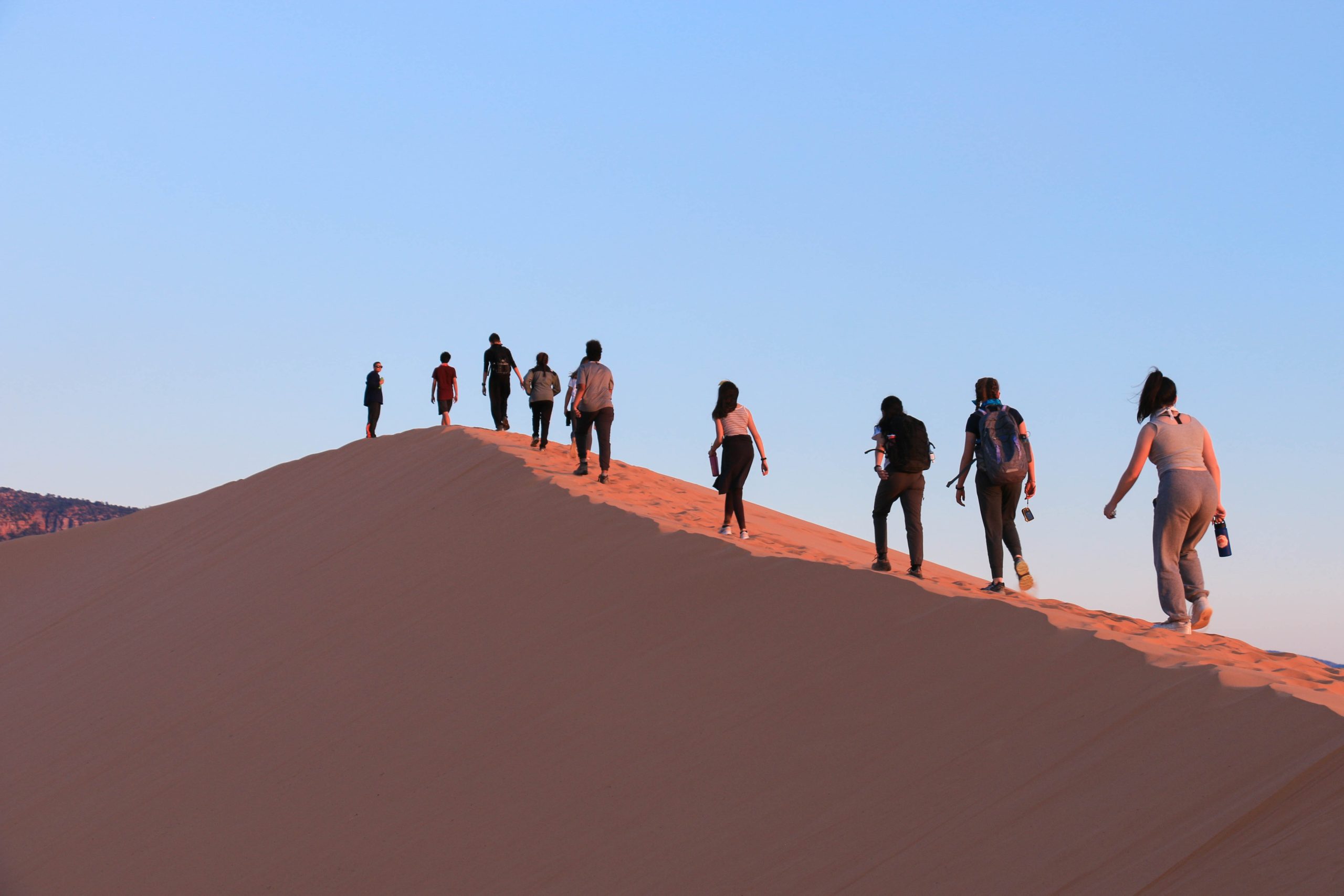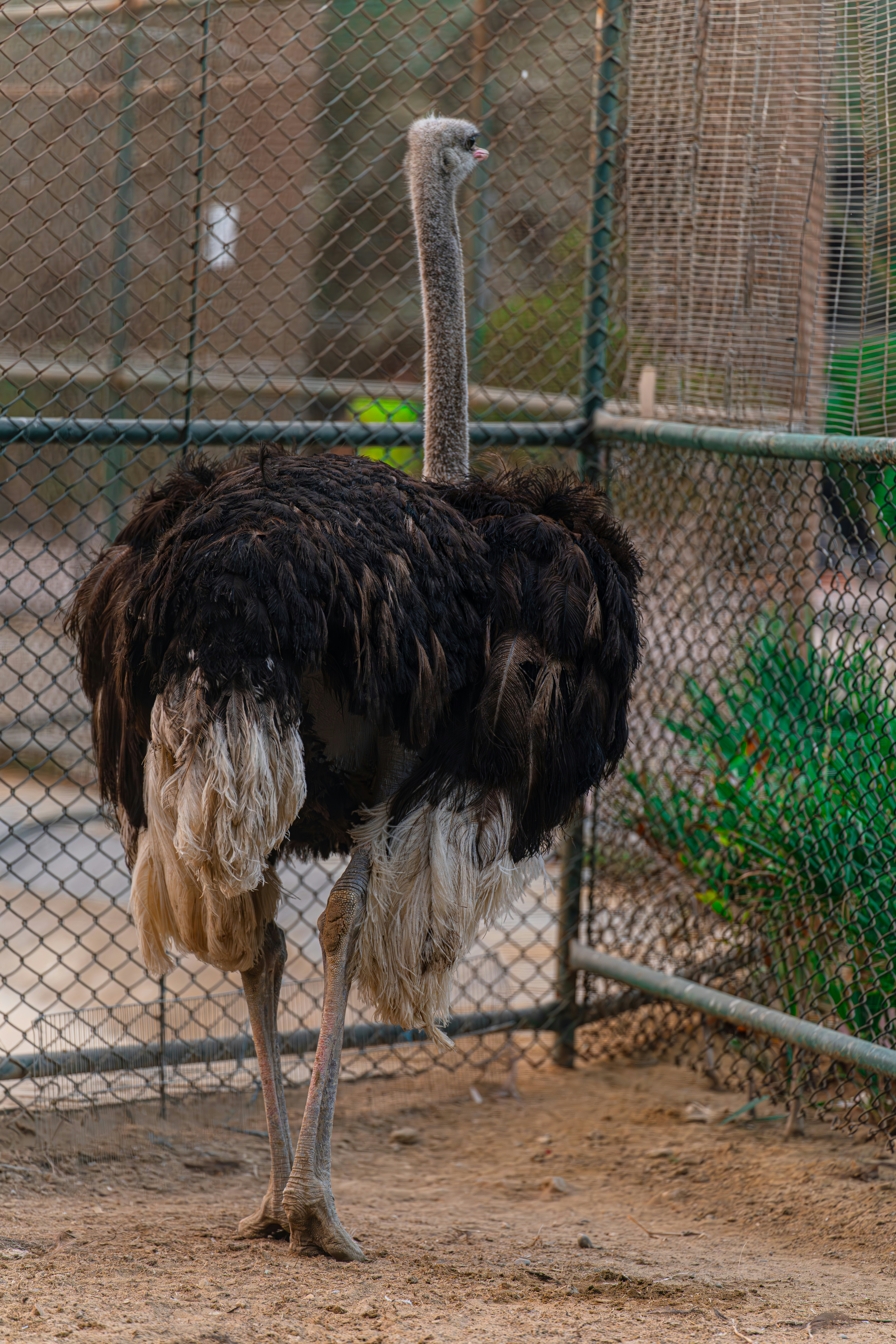Imagine finding yourself alone in the vast expanse of a desert, with its merciless heat, treacherous terrain, and limited resources. In such an unforgiving environment, survival hinges on the possession of a few essential skills. From water procurement to navigation, and from shelter-building to signaling for help, mastering these skills could mean the difference between life and death in the desert. In this article, we will explore some of the most vital skills necessary for your survival in the harsh desert landscape.

Understanding Desert Environments
Deserts are vast and unforgiving landscapes that require specialized knowledge and skills to navigate and survive. By understanding the different types of deserts, recognizing the unique flora and fauna that call them home, and identifying potential dangers, you can increase your chances of surviving in these harsh environments.
Determining Desert Types
Deserts can be broadly classified into four types: hot and dry deserts, semiarid deserts, coastal deserts, and cold deserts. Hot and dry deserts, such as the Sahara, are characterized by scorching temperatures and a lack of precipitation. Semiarid deserts, like the Sonoran Desert, experience moderate temperatures and slightly more rainfall. Coastal deserts, such as the Namib Desert, are influenced by nearby bodies of water and often have cool temperatures and fog. Cold deserts, like the Gobi Desert, have frigid temperatures and low precipitation. By understanding these variations, you can better prepare for the specific challenges each desert type presents.
Recognizing Desert Flora and Fauna
Desert flora and fauna have adapted to survive in extreme conditions with limited water and resources. Cacti, such as the saguaro and prickly pear, are iconic desert plants known for their ability to store water. Other common desert plants include yuccas, agaves, and creosote bushes. When it comes to desert wildlife, you may encounter creatures like rattlesnakes, scorpions, coyotes, and kangaroo rats. Learning to identify the unique characteristics of desert plants and animals can help you navigate the landscape safely and even find sources of food and water if necessary.
Identifying Potential Dangers in Desert Environments
Surviving in the desert requires a keen awareness of potential dangers. Extreme heat and dehydration pose significant risks, and it is crucial to understand the signs of heat exhaustion and heat stroke. Symptoms such as dizziness, fatigue, and nausea should be taken seriously, as they can indicate serious health complications. Additionally, deserts are home to venomous snakes, spiders, and scorpions, so it is important to stay vigilant and learn how to avoid or respond to encounters with these creatures. Flash floods, sandstorms, and intense sun exposure are additional hazards to be aware of when navigating desert environments.
Water Procurement Skills
Water is a precious resource in the desert, and knowing how to find and collect it can mean the difference between life and death.
Finding Water Sources
One of the first skills you should learn is how to find water sources in the desert. Look for signs of vegetation, as they often indicate the presence of water underground. Animals can also provide clues to nearby water sources, so pay attention to their movements and behavior. Additionally, familiarize yourself with desert terrain features such as dry riverbeds, which may contain hidden water pockets.
Collecting Dew and Condensation
In desert environments, water is sometimes scarce, but there are still ways to obtain it. Collecting dew and condensation is a viable method. Place a container or absorbent cloth outside during the night, and the moisture in the air will condense. In the early morning, before the sun evaporates it, wring out the cloth or collect the water from the container.
Extracting Water from Plants
Certain desert plants, such as cacti, can serve as a source of water in an emergency. In some cases, you can cut or puncture the plant to access its water-filled tissues. However, be cautious and ensure you are not harming protected or endangered species. Knowing which plants are safe to extract water from is crucial, as consuming the wrong plant can have harmful or even deadly consequences.
Creating a Solar Still
A solar still is a simple and effective method for extracting water from the ground. Dig a hole in the ground, place a container in the center, and cover the hole with a transparent material like plastic. Secure the edges to trap the evaporated moisture inside. As the sun heats the ground, moisture will evaporate, condense on the inner surface of the plastic, and drip into the container below.
Heat Stroke Prevention
Heat-related illnesses are common in desert environments, but with the right knowledge and precautions, they can be prevented.
Recognizing Signs of Heat Exhaustion and Heat Stroke
Heat exhaustion and heat stroke are serious conditions that can result from prolonged exposure to high temperatures. Symptoms of heat exhaustion include heavy sweating, weakness, headache, and nausea. If left untreated, it can progress to heat stroke, which is a medical emergency. Signs of heat stroke include a high body temperature, confusion, seizures, and loss of consciousness. It is essential to recognize these symptoms in yourself and others to seek help promptly.
Understanding the Importance of Hydration
Staying hydrated is crucial in the desert, as the extreme heat and dryness deplete your body of water rapidly. To prevent dehydration, drink water frequently, even if you do not feel thirsty. It is recommended to carry a portable water filtration system or water purification tablets to ensure a clean water supply. Additionally, avoid consuming alcohol and caffeine, as these substances can contribute to dehydration.
Choosing Appropriate Clothing for Desert Climates
Proper clothing selection is vital for protecting yourself from the desert’s harsh conditions. Opt for lightweight, loose-fitting garments made of breathable materials that allow air circulation. Wear a wide-brimmed hat to shield your face and neck from the sun, and apply sunscreen regularly to protect exposed skin. Clothing that reflects sunlight and provides UV protection is highly recommended.
Food Procurement
Finding sustenance in the desert can be challenging, but with the right knowledge, you can identify edible plants, use hunting methods suited for deserts, and even fish in desert rivers and streams.
Identifying Desert Plants and Insects for Consumption
Knowing which desert plants are edible can be a valuable survival skill. Edible plants such as mesquite beans, cholla cactus buds, and prickly pear fruits provide nutrients and hydration. However, it is essential to learn how to properly prepare these plants to remove toxins and ensure they are safe for consumption. Additionally, insects like ants, termites, and grasshoppers can provide a significant source of protein in a survival situation.
Hunting Methods Suitable for Deserts
When it comes to hunting in the desert, it is crucial to conserve energy and minimize water usage. Implementing passive traps, such as pitfall traps or deadfall traps, can increase your chances of catching small game while requiring less physical exertion. Another option is using a hunting tool, like a spear or a slingshot, to target animals at a safe distance.
Fishing in Desert Rivers and Streams
In rare cases, desert environments may have flowing rivers or streams that support aquatic life. Fishing can be a viable method of food procurement in these areas. Constructing a simple fishing net using available materials or creating makeshift fishing hooks from thorns or bones can increase your chances of catching fish or other aquatic creatures.
Shelter Building
Creating a suitable shelter is crucial for protecting yourself from the elements and ensuring your survival in the desert.
Choosing a Proper Location
When selecting a location for your shelter, consider factors such as proximity to water sources, potential flood zones, and exposure to extreme temperatures. Look for natural formations like caves or rock overhangs that can offer some protection from the sun and wind. Avoid low-lying areas prone to flooding and areas with potential hazards, such as steep cliffs or loose rock formations.
Utilizing Natural Shelters
In some cases, natural shelters may be available, such as large boulders, caves, or dense vegetation. Assess these potential shelters for stability and protection from the elements. Modify the natural structures to create a cozy and secure space, reinforcing them with additional materials or using them as a foundation for building a more substantial shelter.
Creating Shelters from Materials at Hand
When natural shelters are not available, constructing a shelter from materials found in the desert is crucial. Use sturdy branches, rocks, or even your own clothing or tarps to create a simple debris shelter. Look for materials like dry leaves or grass to provide insulation and improve the shelter’s ability to retain body heat during the cold desert nights.
Navigation Skills
Navigating the sprawling and featureless desert landscape can be incredibly challenging, but understanding key navigation techniques can help you find your way to safety.
Using the Sun and Stars for Navigation
The sun and stars can provide valuable orientation cues when navigating the desert. During daylight hours, the sun’s position in the sky can help you determine your direction of travel. By observing the movement of shadows or using an improvised sundial, you can roughly estimate the time of day and navigate accordingly. Additionally, learning basic star constellations can assist you in orienting yourself during nighttime.
Understanding Desert Landscape Features
Becoming familiar with desert landscape features can aid in navigation and provide valuable information about your surroundings. Features such as dunes, rock formations, and distinct topography can serve as landmarks, helping you retrace your steps or find your way to safety. Pay attention to wind patterns, as they can shape the terrain and indicate potential sources of water or shelter.
Recognizing Major Landmarks
Major landmarks, such as mountains, cliffs, or distinctive geological formations, can be essential references when navigating the desert. Before venturing into the desert, study maps or aerial imagery to familiarize yourself with these landmarks and their relative positions. Utilize compasses or GPS devices to ensure accurate navigation and prevent getting disoriented.
Fire-Making
Fire provides warmth, light, a means of cooking, and a crucial psychological boost in survival situations. Knowing how to create and extinguish a fire safely is vital in the desert environment.
Choosing Suitable Fuel Sources
Desert environments may have limited sources of combustible materials, but it is still possible to find suitable fuel. Look for dry vegetation, such as dry grass, dead branches, or fallen twigs. Additionally, animal dung can serve as a reliable fuel source once it has dried out. Collecting fuel responsibly and avoiding live plants or endangered materials is essential to preserve the delicate desert ecosystem.
Creating Fire with Primitive Methods
In the absence of lighters or matches, primitive fire-making methods can save your life. Techniques such as the bow drill, hand drill, or fire plow involve friction to create sparks and ignite tinder. These methods require practice, so familiarize yourself with the process before finding yourself in an emergency situation.
Safely Extinguishing a Fire
Being responsible with fire is crucial to prevent the risk of wildfires in the desert. Ensure the fire is entirely extinguished before leaving the area or going to sleep. Spread out the ashes and charred debris, and douse them with water if available. Completely smothering the fire with sand or dirt can also help suppress any remaining embers.
First Aid Knowledge
In any survival situation, understanding basic first aid skills is essential for treating injuries or addressing medical emergencies.
Treating Heat-Related Illnesses
Heat exhaustion and heat stroke require immediate medical attention. If you or someone else exhibits symptoms such as dizziness, nausea, or confusion, move to a shaded area and cool the body by applying wet towels or immersing in water. Rehydration is crucial, so provide small sips of water if the person is conscious and able to drink.
Addressing Insect Bites or Scorpion Stings
Insect bites or scorpion stings can be painful and potentially life-threatening, especially if an allergic reaction occurs. Clean the wound with clean water, if available, and apply a cold compress to reduce pain and swelling. If possible, try to identify the insect or scorpion for medical professionals to determine the appropriate treatment.
Applying Bandages or Splints in Emergency Situations
In the event of injuries requiring bandages or splints, it is important to know how to securely immobilize the affected area. Clean the wound with clean water, if available, before applying a sterile dressing or cloth. If a bone fracture is suspected, create a splint using rigid materials such as sticks or branches to stabilize the injured limb. Seek professional medical help as soon as possible.
Signaling for Rescue
If you find yourself in a dire situation, signaling for rescue can increase your chances of being found and receiving assistance.
Creating Signal Fires
Signal fires can be highly effective in attracting attention from rescuers or passing aircraft. Choose an open area away from vegetation and build a fire with combustible materials that produce dense smoke, such as green or wet vegetation. Creating three fires in a triangular pattern is a recognized distress signal.
Using Mirrors or Shiny Objects for Signaling
Reflective objects like mirrors, metal or plastic containers, or even smartphone screens can be used to catch the attention of rescuers. Direct the reflected sunlight toward the intended recipient by angling the object accordingly. Using Morse code signals, such as flashes of light, can further communicate distress.
Making Ground-to-Air Signals
Ground-to-air signals can be created using rocks or sticks to spell out messages or form recognizable symbols in the sand or soil. Use large, contrasting patterns or colors that can be easily spotted from overhead. Additionally, using brightly colored clothing or flags can enhance visibility and increase the likelihood of being noticed.
Physical and Mental Conditioning
Surviving in the desert requires physical endurance and mental resilience. Preparing yourself mentally and physically can greatly improve your chances of survival.
Training for Physical Endurance
The desert can present physically demanding challenges, so training your body to endure extreme temperatures, scarcity of resources, and long periods of physical exertion is essential. Engage in regular cardiovascular exercise, such as running or hiking, to increase stamina and endurance. Practice carrying weighted backpacks to simulate the physical strain of traversing the desert with necessary supplies.
Developing Mental Resilience for Survival Situations
Surviving in the desert can be mentally challenging, as isolation, harsh conditions, and the constant need for self-reliance take a toll. Developing mental resilience through meditation, visualization techniques, and positive self-talk can help you stay calm and focused in stressful situations. Build mental resiliency by exposing yourself gradually to uncomfortable environments and practicing problem-solving skills.
Understanding the Psychological Effects of Isolation in a Desert Environment
The desert’s vast expanse and isolation can lead to psychological effects, such as loneliness, depression, and anxiety. It is important to recognize these emotions and proactively address them. Maintaining a routine, staying busy with survival tasks, and finding solace in the beauty of the desert can help combat feelings of isolation. If possible, connecting with loved ones through satellite phones or emergency communication devices can provide emotional support.
Surviving in the desert requires a combination of knowledge, skills, and mental fortitude. By understanding desert environments, acquiring essential survival skills, and preparing yourself physically and mentally, you can increase your chances of successfully navigating and enduring these challenging landscapes. Remember, preparation is key, and with the right mindset and skills, you can overcome the harsh conditions of the desert and emerge as a resilient survivor.


